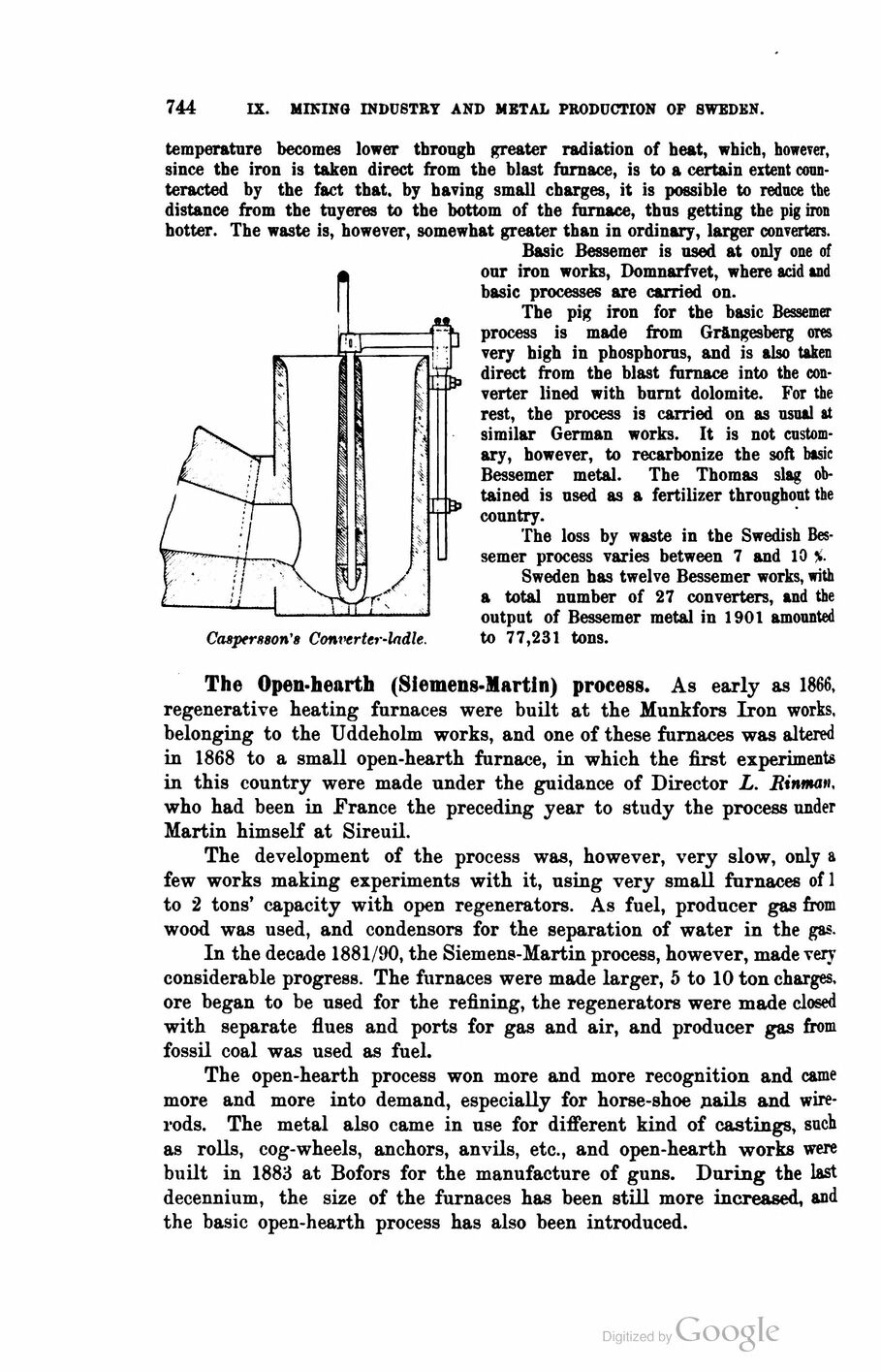
Full resolution (JPEG) - On this page / på denna sida - Second part - IX. Mining Industry and Metal Production - 2. The Iron and Steel Industry. By the late Prof. J. G. Wiborgh - Ingot iron (Steel)

<< prev. page << föreg. sida << >> nästa sida >> next page >>
Below is the raw OCR text
from the above scanned image.
Do you see an error? Proofread the page now!
Här nedan syns maskintolkade texten från faksimilbilden ovan.
Ser du något fel? Korrekturläs sidan nu!
This page has never been proofread. / Denna sida har aldrig korrekturlästs.
744 ix. miking industry and metal production of sweden.
temperature becomes lower through greater radiation of heat, which, however,
since the iron is taken direct from the blast furnace, is to a certain extent
counteracted by the fact that, by having small charges, it is possible to reduce the
distance from the tuyeres to the bottom of the furnace, thus getting the pig iron
hotter. The waste is, however, somewhat greater than in ordinary, larger converters.
Basic Bessemer is used at only one of
our iron works, Domnarfvet, where acid and
basic processes are carried on.
The pig iron for the basic Bessemer
process is made from Grängesberg ores
very high in phosphorus, and is also taken
direct from the blast furnace into the
converter lined with burnt dolomite. For the
rest, the process is carried on as usual at
similar German works. It is not
customary, however, to recarbonize the soft basic
Bessemer metal. The Thomas slag
obtained is used as a fertilizer throughout the
country.
The loss by waste in the Swedish
Bessemer process varies between 7 and 10 V
Sweden has twelve Bessemer works, with
a total number of 27 converters, and the
output of Bessemer metal in 1901 amounted
to 77,231 tons.
The Open-hearth (Siemens-Martin) process. As early as 1866,
regenerative heating furnaces were built at the Munkfors Iron works,
belonging to the Uddeholm works, and one of these furnaces was altered
in 1868 to a small open-hearth furnace, in which the first experiments
in this country were made under the guidance of Director L. Rinman,
who had been in France the preceding year to study the process under
Martin himself at Sireuil.
The development of the process was, however, very slow, only a
few works making experiments with it, using very small furnaces ofl
to 2 tons’ capacity with open regenerators. As fuel, producer gas from
wood was used, and condensors for the separation of water in the gas.
In the decade 1881/90, the Siemens-Martin process, however, made very
considerable progress. The furnaces were made larger, 5 to 10 ton charges,
ore began to be used for the refining, the regenerators were made closed
with separate flues and ports for gas and air, and producer gas from
fossil coal was used as fuel.
The open-hearth process won more and more recognition and came
more and more into demand, especially for horse-shoe nails and
wire-rods. The metal also came in use for different kind of castings, such
as rolls, cog-wheels, anchors, anvils, etc., and open-hearth works were
built in 1883 at Bofors for the manufacture of guns. During the last
decennium, the size of the furnaces has been still more increased, and
the basic open-hearth process has also been introduced.
Caspfrs8on’8 Converter-ladle.
<< prev. page << föreg. sida << >> nästa sida >> next page >>